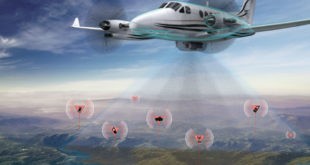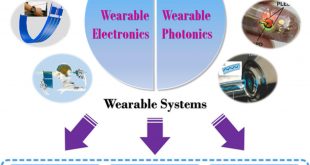There has been an exponential growth of space objects, including orbital debris that has increased the in-orbit collision risk. NASA estimates there are 21,000 objects orbiting Earth that are larger than 10 cm, 500,000 between 1 and 10 cm, and more than 100 million that are less than 1 cm. …
Read More »TimeLine Layout
July, 2022
-
14 July
DARPA Ocean Of Things(OoT) to provide automatic detection of Russian and Chinese submarines and ships
The Internet of Things (IoT) is a system of interrelated computing devices, mechanical and digital machines, objects, animals or people that are provided with unique identifiers (UIDs) and the ability to transfer data over a network without requiring human-to-human or human-to-computer interaction. By 2025, it is predicted that there can …
Read More » -
13 July
Transfer of Technology (ToT) best practices and tools.
Technology transfer, or Tech Transfer a.k.a. transfer of technology (ToT), is a process in which technology or knowledge developed at one organization is transferred to another, typically for the purpose of commercialization. Through this process, a donor site (either a product’s sponsor or a manufacturing site) transmits proprietary knowledge …
Read More » -
12 July
Communications intelligence (COMINT) technology
Electronic Warfare EW, encompasses, in all battle phases, military actions involving the use of EM energy to determine, exploit, reduce or prevent hostile use of EM spectrum and the actions, which retain friendly use of the EM spectrum. EW consists of three related sectors, viz., Electronic Protection (EP), Electronic Attack …
Read More » -
10 July
Neuroscience or Cognitive Biotechnology (CBT) increasingly being militarized and weaponized.
Neuroscience (or neurobiology) is the scientific study of the nervous system. It is a multidisciplinary branch of biology that combines physiology, anatomy, molecular biology, developmental biology, cytology, mathematical modeling and psychology to understand the fundamental and emergent properties of neurons and neural circuits. Neuroanatomists studied the brain’s shape, its …
Read More » -
9 July
Swarm intelligence technology for collaboration of Military drones
A robot swarm typically consists of tiny, simple, indistinguishable robots that are each equipped with a sensor (and a camera, radar and/or sonar so they can gather information about their surrounding environment). When one robot collects and shares data with the others in the group, it allows the singular robots …
Read More » -
8 July
Military Robots growth
A robot, is any automatically operated machine that replaces human effort, though it may not resemble human beings in appearance or perform functions in a humanlike manner. A robot is a machine—especially one programmable by a computer—capable of carrying out a complex series of actions automatically. A robot can be …
Read More » -
8 July
Growing security and military nexus between Pakistan, Turkey, Qatar and Malaysia may become threat to India in future
Pakistan has managed to avoid being placed on the Financial Action Task Force (FATF) blacklist for now following support from all-weather ally China, traditional ally Turkey and Malaysia. The FATF charter mandates support of at least three member states to avoid the blacklisting. The development has come as a relief …
Read More » -
7 July
Wearable Photonic devices making personalized medicine and health tracking a reality.
Currently, old-style personal Medicare techniques rely mostly on traditional methods, such as cumbersome tools and complicated processes, which can be time-consuming and inconvenient in some circumstances. Furthermore, such old methods need the use of heavy equipment, blood draws, and traditional bench-top testing procedures. Invasive ways of acquiring test samples can …
Read More » -
5 July
Optical Networks Vulnerabilities and Security threats
Optical networks are vulnerable to several types of security breaches or attacks, typically aimed at disrupting the service or gaining unauthorized access to carried data, i.e., eavesdropping. Depending on the aim of the attack, security breaches can induce financial losses to the clients or cause network-wide service disruption, possibly leading to huge …
Read More »
 International Defense Security & Technology Your trusted Source for News, Research and Analysis
International Defense Security & Technology Your trusted Source for News, Research and Analysis









